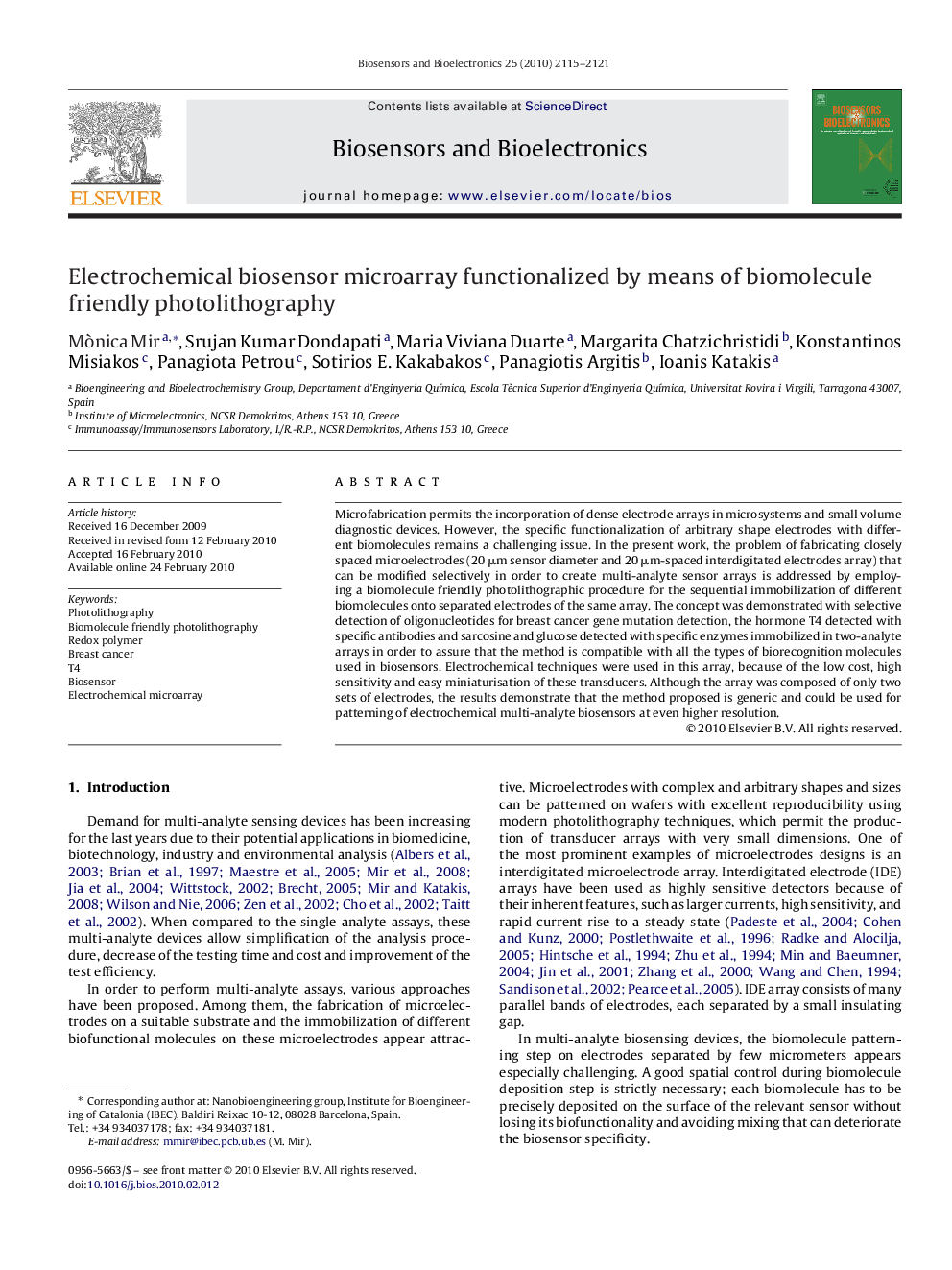| Article ID | Journal | Published Year | Pages | File Type |
|---|---|---|---|---|
| 868764 | Biosensors and Bioelectronics | 2010 | 7 Pages |
Microfabrication permits the incorporation of dense electrode arrays in microsystems and small volume diagnostic devices. However, the specific functionalization of arbitrary shape electrodes with different biomolecules remains a challenging issue. In the present work, the problem of fabricating closely spaced microelectrodes (20 μm sensor diameter and 20 μm-spaced interdigitated electrodes array) that can be modified selectively in order to create multi-analyte sensor arrays is addressed by employing a biomolecule friendly photolithographic procedure for the sequential immobilization of different biomolecules onto separated electrodes of the same array. The concept was demonstrated with selective detection of oligonucleotides for breast cancer gene mutation detection, the hormone T4 detected with specific antibodies and sarcosine and glucose detected with specific enzymes immobilized in two-analyte arrays in order to assure that the method is compatible with all the types of biorecognition molecules used in biosensors. Electrochemical techniques were used in this array, because of the low cost, high sensitivity and easy miniaturisation of these transducers. Although the array was composed of only two sets of electrodes, the results demonstrate that the method proposed is generic and could be used for patterning of electrochemical multi-analyte biosensors at even higher resolution.
